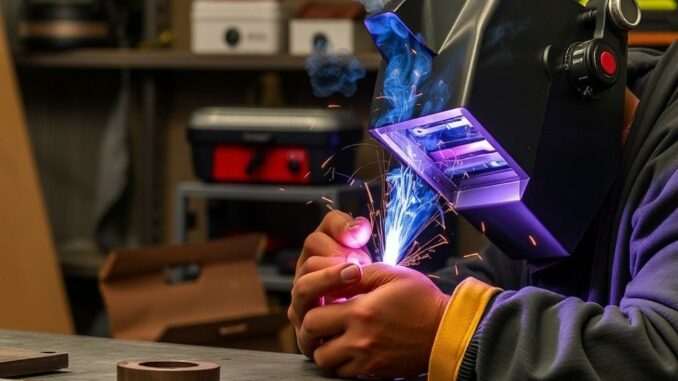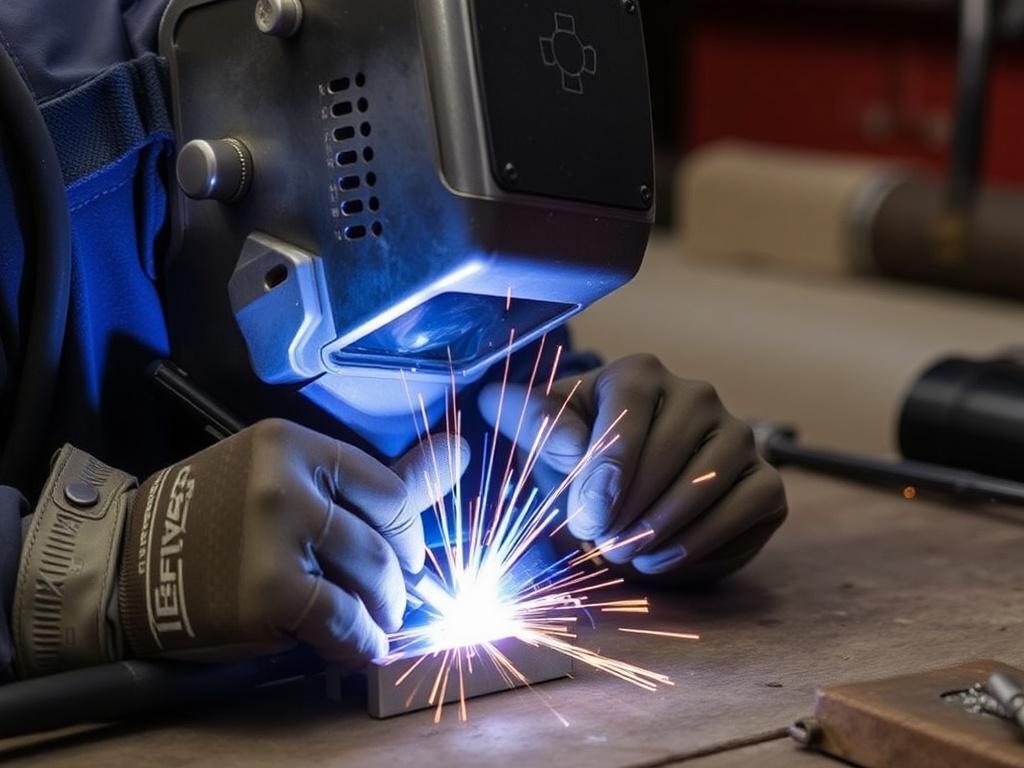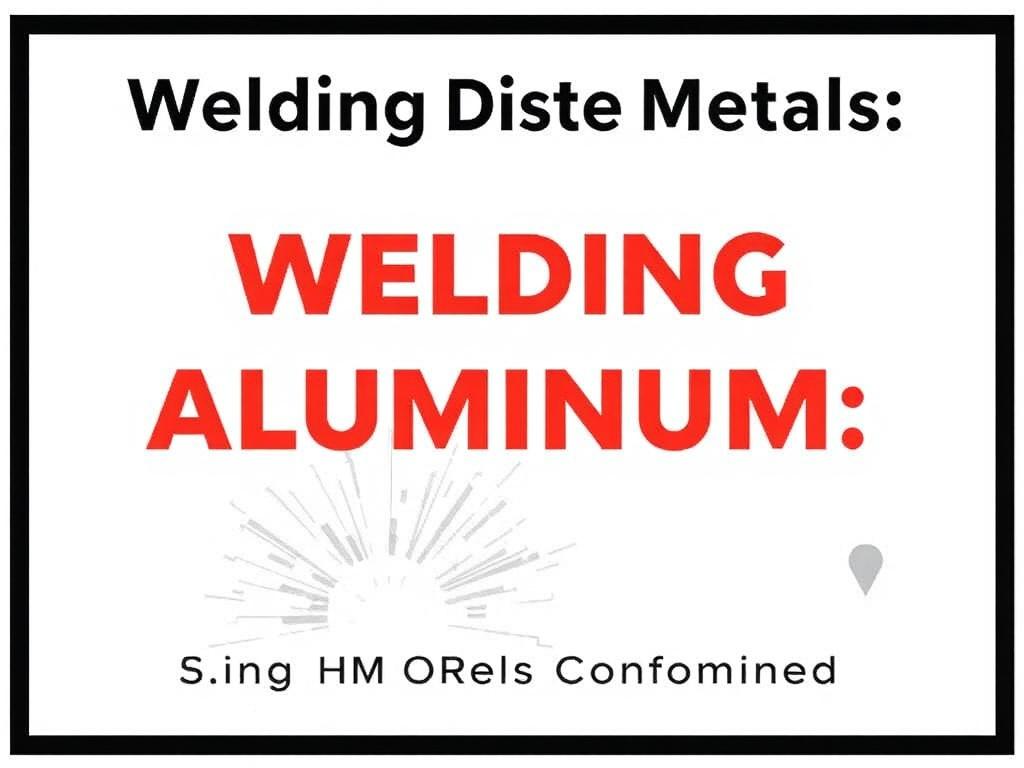
Welding is a craft that has shaped industries, architecture, and everyday life, creating everything from towering skyscrapers to intricate jewelry. But did you know that welding different metals requires unique skills, techniques, and understanding? Whether you’re tackling steel, aluminum, copper, or other metals, each material presents its own set of challenges and opportunities. In this comprehensive guide, we’ll explore the fascinating world of welding various metals — why it matters, how to approach each type, and how to get the best results with your welding projects.
Understanding the Basics: What Is Welding?
Before diving into welding different metals, it helps to understand what welding really is. At its core, welding is the process of joining two or more pieces of metal together by applying heat, pressure, or both, causing the metal edges to melt and fuse together when cooled. This creates a joint that is typically as strong as, or stronger than, the materials themselves.
The beauty of welding lies in its versatility: it can be done with various tools, from traditional arc welding equipment to sophisticated laser welders. However, not every metal welds in quite the same way, and some require special considerations due to their physical properties.
Why Different Metals Require Different Welding Techniques
Metals differ in melting points, thermal conductivity, expansion rates, and more. These differences impact how metals behave under heat and determine the proper welding technique, filler material, and even safety precautions you should take. For example, aluminum has a much lower melting point than steel, but it also conducts heat quickly, making it tricky to weld without causing warping.
Understanding these characteristics not only helps achieve strong welds but also prevents defects such as cracks, porosity, and weak bonds. If you want your projects to last and perform under stress, taking the time to learn about each metal’s unique behavior during welding is essential.
Welding Steel: The Backbone of Metalwork

Steel is arguably the most common and widely used metal for welding. Found in everything from car frames to construction beams, steel offers strength, versatility, and relative ease in welding compared to other metals. That said, steel itself comes in many varieties—carbon steel, stainless steel, alloy steel—all requiring slight adjustments in welding strategy.
Types of Steel and Their Welding Requirements
| Type of Steel | Description | Common Welding Methods | Key Considerations |
|---|---|---|---|
| Carbon Steel | Most common steel with varying carbon content. | MIG, Stick, TIG | Preheat high-carbon steel to avoid cracking. |
| Stainless Steel | Corrosion resistant alloy with chromium. | TIG, MIG | Use low heat to prevent warping and discoloration. |
| Alloy Steel | Steel with additional elements for special properties. | Stick, TIG | Careful filler metal matching important. |
When welding steel, especially carbon steel, one of the most common challenges is cracking caused by rapid cooling or improper technique. Preheating the metal and controlled cooling are essential practices to avoid stress fractures. Steel’s relatively high melting point — around 1370°C (2500°F) — means it requires plenty of heat, usually supplied by arc welding processes such as MIG (Metal Inert Gas) or Stick welding.
Popular Welding Techniques for Steel
- Stick Welding (SMAW): Versatile and easy to use outdoors, excellent for thick steel.
- MIG Welding: Great for beginners, produces clean welds at faster speeds.
- TIG Welding: Offers high precision, ideal for thin steel and stainless steel.
Steel’s predictability and strength make it a favorite, but even then, ensuring clean surfaces and correct parameters contributes significantly to successful welds. Rust, oil, or paint residues can cause poor welds and must be cleaned properly.
Welding Aluminum: A Lightweight Challenge

Aluminum is popular for applications where weight is a concern — aircraft, automotive parts, and outdoor furniture, to name a few. However, welding aluminum is notably more challenging than welding steel, and the techniques used differ significantly.
Why Aluminum Is Tricky to Weld
The main difficulties with welding aluminum stem from its high thermal conductivity and relatively low melting point (about 660°C or 1220°F). Aluminum absorbs heat quickly, which can cause warping or burn-through if not controlled carefully. In addition, aluminum develops a tough oxide layer on its surface that melts at a much higher temperature than the base metal, potentially leading to poor fusion if not properly cleaned.
Proper Methods for Welding Aluminum
- TIG Welding: Provides the control needed for thin, clean aluminum welds.
- MIG Welding with Pulsed Current: Faster than TIG, good for thicker aluminum sections.
Both methods typically require argon or argon-helium gas mixtures for shielding, maintaining an inert atmosphere around the weld to protect the metal. Cleaning the aluminum thoroughly with a wire brush or chemical cleaner beforehand is vital to remove the oxide layer and avoid weld defects.
Choosing the Right Filler Metal
Filler metals such as 4045, 5356, and 4047 alloys are common choices when welding aluminum, each suited for specific base metals and applications. For example, 5356 is widely used for outdoor welding because of its corrosion resistance.
Welding Copper and Its Alloys
Copper is famous for its excellent electrical conductivity and corrosion resistance, making it essential in electrical wiring, plumbing, and heat exchangers. But welding copper demands a delicate touch because of its high thermal conductivity, which disperses heat rapidly.
Challenges When Welding Copper
Because copper conducts heat about four times better than steel, weld zones cool rapidly, which can make it tricky to maintain a molten pool long enough for a strong bond. Copper also expands when heated and shrinks upon cooling, leading to distortion or cracking if not managed.
Best Welding Techniques for Copper
- TIG Welding: Preferred for copper’s fine control and clean welds.
- Brazing and Silver Soldering: Alternatives for thinner copper parts or delicate assemblies.
MIG welding can be used on thicker copper sections, but the key remains sufficient heat control and proper shielding gas, commonly argon. Before welding, copper should be cleaned to prevent contamination and oxidation which can weaken the joint.
Considerations for Copper Alloys
Copper alloys like bronze and brass have different melting points and thermal properties. For example, welding brass requires caution because its zinc content can vaporize and cause porosity or toxic fumes. Proper ventilation and protective equipment are vital in these situations.
Other Metals You Can Weld and How to Approach Them

Beyond steel, aluminum, and copper, many other metals and alloys can be welded if you know how to handle them. Let’s look at some of the common ones:
Magnesium
Magnesium is lightweight and strong but highly flammable when powdered or shaved. Welding magnesium requires precise control and an inert atmosphere. TIG welding is often preferred, using pure argon shielding gas.
Titanium
Titanium is known for its strength-to-weight ratio and corrosion resistance, frequently used in aerospace. It must be welded in a clean and oxygen-free environment to prevent contamination. TIG welding with high-purity argon or helium is standard practice.
Cast Iron
Cast iron is brittle and prone to cracking, which complicates welding. Specialized filler metals and preheating are essential to avoid stress fractures. Stick welding often works well, especially with nickel-based electrodes.
Essential Tips for Welding Different Metals Successfully
If there’s one takeaway from studying welding different metals, it’s this: preparation and knowledge are everything. Here are some important tips that apply across the board:
- Cleanliness is Key: Remove rust, paint, oil, and oxides before welding to ensure strong, consistent welds.
- Choose the Right Filler Metal: Use filler rods or electrodes compatible with your base metals to avoid weak joints.
- Use Proper Shielding Gas: Protect your weld pool from contamination with the appropriate inert or semi-inert gases like argon or helium.
- Understand Thermal Behavior: Metals expand, contract, and conduct heat differently; manage heat input carefully to prevent warping or cracking.
- Safety First: Always use protective gear, work in well-ventilated areas, and be aware of toxic fumes that some alloys may produce.
Summary Table: Welding Different Metals at a Glance
| Metal | Melting Point (°C) | Common Welding Methods | Challenges | Tips |
|---|---|---|---|---|
| Steel (Carbon) | 1370-1510 | MIG, Stick, TIG | Cracking due to cooling | Preheat and controlled cooling |
| Aluminum | 660 | TIG, MIG (pulsed) | Oxide layer, heat dissipation | Clean thoroughly, use argon shielding |
| Copper | 1085 | TIG, Brazing | Heat conduction, distortion | Close heat control, clean surface |
| Titanium | 1668 | TIG | Oxygen contamination | Cleanwork, inert atmosphere |
| Cast Iron | 1200-1300 | Stick, Brazing | Brittle, cracking | Preheat, nickel electrodes |
Final Thoughts: Embrace the Art and Science of Welding
Welding different metals like steel, aluminum, copper, and beyond is more than just heating and joining metal pieces—it’s a delicate balance of science, art, and craftsmanship. The more you understand about each metal’s properties and how to work with them, the more confident and skilled you’ll become.
Whether you’re a hobbyist looking to create custom metal pieces or a professional welder tackling industrial jobs, knowing the nuances of welding these various metals can set you apart and ensure your projects stand the test of time. Practice patience, continue learning, and always prioritize safety. The world of welding is vast and exciting, and once you gain a solid foundation, the possibilities are endless.
Happy welding!
